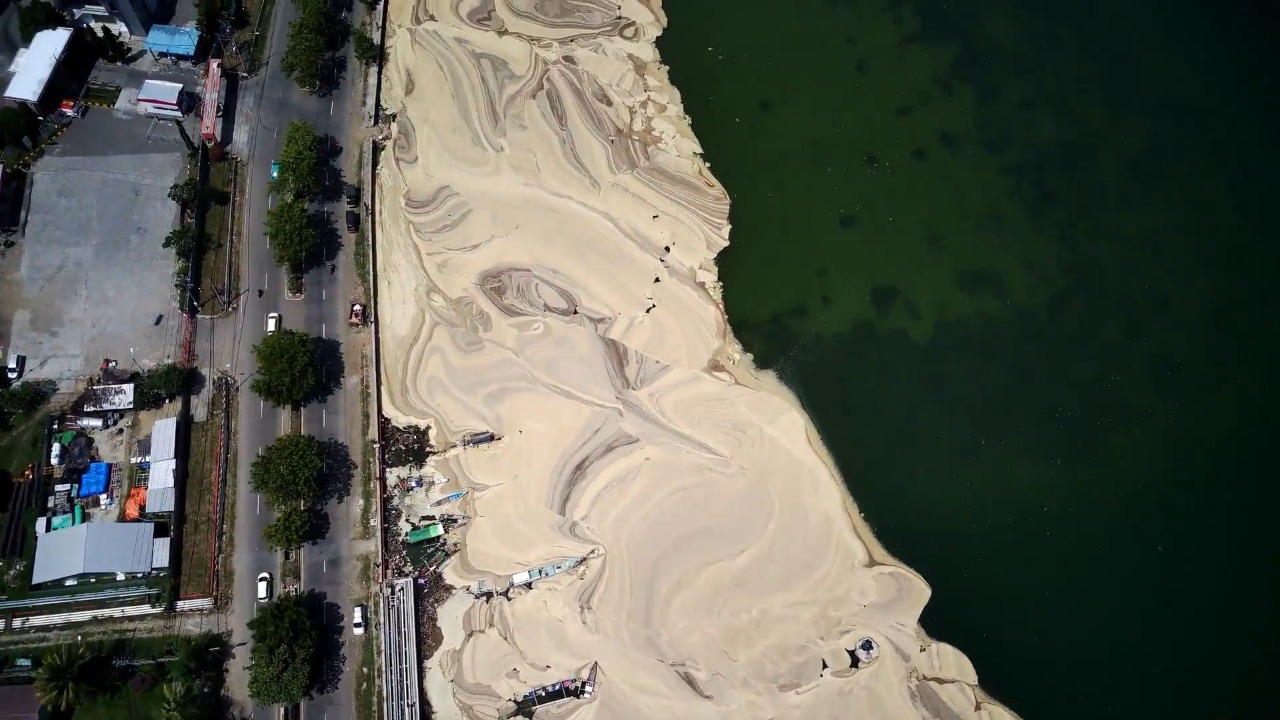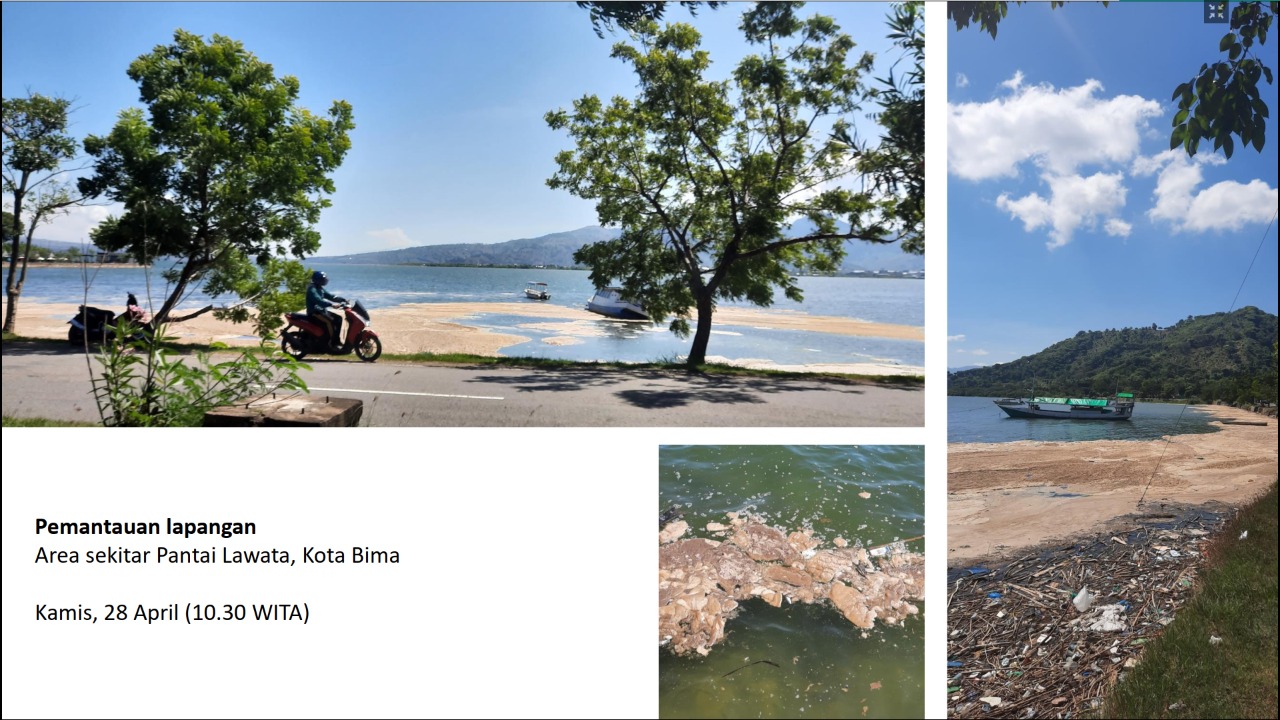ITB‘s Solution to Bima Bay Pollution Problem
By Adi Permana
Editor Adi Permana

BANDUNG, itb.ac.id—The mysterious froth phenomenon that appeared in Bima Bay had caught the attention of the general public across Indonesia. According to the local people, the appearance of brown froth in Bima Bay occurred almost every year, but lately it had been increasing in magnitude. In response to this, the Faculty of Civil and Environmental Engineering of Institut Teknologi Bandung (FTSL ITB) conducted field research by collecting samples at 5 points. The research results were presented at a hybrid press conference attended by various media on Tuesday (6/15/2022).
The press conference presented FTSL ITB Water and Liquid Waste Engineering Expert Prof. Dr. Ing. Ir. Prayatni Soewondo, M.S., and Director of Coastal and Marine Pollution and Damage Control Drs. Dasrul, M.M., M.E., M.H., as guest speakers. This research was conducted in collaboration with the Center for Environmental Studies ITB (PSLH ITB) and the Ministry of Environment and Forestry (KLHK). In the field, the research team was also assisted by the Environment Office and the Government Representative of Bima City.
According to Prof. Prayatni, from a geographical standpoint, Bima Bay was identified as a semi-enclosed sea. This was supported by a global-scale research showing that 76% of algal blooms occur in semi-enclosed sea areas. The nutrient content in Bima Bay was also highly concentrated which caused the rapid growth of diatomaceous algae in the form of brown froth, a phenomenon also known as algal bloom. This phenomenon occurs when disturbances such as wind, waves, and phytoplankton (the cause of brown froth) take place in seawater.

In addition, seawater toxicity tests were conducted at 5 points (3 coastlines and 2 rivers) and showed relatively consistent results. The toxicity of seawater is greater than that of river water. Indications of pollutant types can be grouped into three: domestic waste (N, P, organic, and coliform), agriculture and fisheries (N and P), and oil content (TPH, toluene, oil, and grease).
This incident certainly had an impact on the surrounding people. On April 27, 2022, there was a case of poisoning due to the consumption of dead fish caused by pollution in Lewintana Village. Furthermore, Bima City’s sludge treatment plant had been rendered dysfunctional. Also, based on the data from Bima City’s Department of Agriculture, the land for corn cultivation in 2016 was only 300 hectares, but by 2020, it had reached 6,000 hectares. In 2019, the corn land in Bima Regency was 68,344 hectares.

According to the results, this phenomenon could not be predicted since a satellite-based image research conducted on May 14, 2022, showed the occurrence had ceased. However, one participant at the Press Conference on May 22, 2022, mentioned that it reappeared. Consequently, Prof. Prayatni advised the public to not do excessive activities and consume fish in Bima Bay.
Prof. Prayatni’s solution to this problem was to conduct engineering and processing in such a way to minimize the waste produced by economic activities nearby. By doing this, the pollution in Bima Bay could be suppressed. The phenomenon in Bima Bay was caused by multisectoral activities, thus a lot of reassessment was urgently needed. Researchers were also studying the current pattern in Bima Bay to determine whether the pollutants would remain in place or potentially spread to the open sea.
Meanwhile, Drs. Dasrul said that the phenomenon had not been found in other provinces, only in Bima Bay. He also urged the public to be cautious at all times due to the toxicity of the water.
Reporter: Pravito Septadenova Dwi Ananta (Geological Engineering, 2019)
Translator: Ariq Ramadhan Teruna (Chemical Engineering, 2021)

.jpg)
.jpg)
.jpg)
.jpg)
.jpg)


